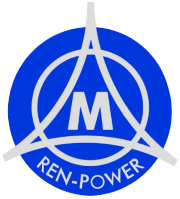First, the current situation of the industrial motor industry
1. The overall growth of industrial motor production and sales Motor refers to an electromagnetic device that realizes the conversion or transmission of electrical energy according to the law of electromagnetic induction. The key field of motor application is industrial motors. With the development of the domestic industry, the production and sales of industrial motors have maintained an overall growth. According to the "In-depth Research and Investment Trend Forecast Report on the Development of China's Industrial Motor Industry (2022-2029)" released by Guanyan Report Network, the output of my country's industrial motors increased from 281.669 million kW to 354.63 million kW in 2016-2021. Revenue increased from 272.38 billion yuan to 350.13 billion yuan.
2. General AC machines account for a relatively high proportion of sales revenue in the industrial motor market
From the perspective of market segments, industrial motors are divided into general AC motors and general DC motors. At present, the sales revenue of general AC machines in the industrial motor market is relatively high, accounting for 35.7%, and the sales revenue of general DC machines accounts for 9.7%.
3. The export value of industrial motors is greater than the import value. From the perspective of import and export, the export volume and export value of my country's industrial motors are greater than the import volume and import value in recent years.
In 2020, due to the impact of the epidemic and the review and restrictions on my country's export equipment by countries led by the United States, the scale of my country's industrial motor exports decreased slightly compared with the same period of the previous year.
2. Competition in the industrial motor industry There are many manufacturers in the domestic industrial motor industry, mainly concentrated in East China, of which Jiangsu Province is the largest, accounting for 15.6%.
From the perspective of competition, the current industrial motor market competition is mainly reflected in the technical content, price, automation level and production scale of manufacturing equipment, etc. The industry presents an echelon competition pattern. The first echelon is the foreign-funded industrial motor manufacturers represented by Siemens and ABB. They have rich experience, mature products and wide sales coverage, occupying the high-end and mid-end market of industrial motors in my country. The second echelon includes local leading manufacturers such as Huichuan, Delta, Wolong and Dayang, as well as Japanese manufacturers such as Hitachi and Toshiba, which mainly occupy the high-end market and some mid-end markets in the areas they focus on. The third echelon is dominated by small and medium-sized enterprises. Small and medium-sized enterprises mainly focus on the low-end market, and the products produced are low in price and poor in stability.
Due to the imperfect market mechanism, the price competition in the industrial motor industry is relatively fierce, which has adversely affected the healthy development of the industry. With the implementation of the national supply-side reform industrial policy, the emergence of the market's role in the survival of the fittest, and the further strengthening of industry entry barriers, the impact of price competition has gradually weakened. In addition, in recent years, mergers and acquisitions integration and capital operations among local leading manufacturers have become more and more frequent, and they are constantly advancing to the first echelon. The industry competition pattern will be rebuilt, and some companies with strong competitive advantages will rise and gradually become the industrial motor industry. Leaders, all links in the industrial chain are expected to continue to achieve domestic substitution.



